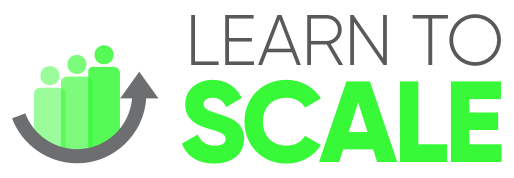Improve Lead Generation With This Learning-Focused Approach
Lead Generation Is Continuous Learning: Here’s How To Start
Everyone wants more business, but how do you get more leads?
In an ideal world, your product or service sells itself. You build it, they come. Leads come in, sales come out.
But making that dream a reality in 2022 requires a crucial marketing process: lead generation.
The lead generation stage of your online marketing is where you capture contact information from people who are genuinely interested in your product or service. While it may seem to be straightforward to get that information- such as simply asking them if they want more information- not all of these leads will convert into real sales.
You need to create ways to generate interest and filter down to the best potential customers for you. Not everyone you meet may be able or want to work with you, so building lots of interest will trickle into a solid list of qualified prospects you can convert to customers.
Lead generation is only one part of your marketing strategy but it can be the perfect pivot point to focus your efforts to match your skills to what customers want.
An easy way to break apart your funnel is to look at it in three stages:
Top-of-Funnel
Middle-of-Funnel
Bottom-of-Funnel
Or more deliciously, TOFU, MOFU, and BOFU.
Today we’re making some TOFU.
This guide will show you how to generate more leads, leading to more sales
Having really sweet closing tactics and beautiful case studies won’t matter to your business if you don’t have enough leads flowing in. No traffic, no hand-raisers, and no opt-ins means no sales.
In just four steps, I’m going to show you how to build a lead gen funnel that you can continually calibrate. Once you build this engine, you’ll have the data to make refining your TOFU dead simple so you can focus on making more sales!
Four Steps To A Continuously Improving Lead Generation Funnel
Step One: Make Something Hot
Create something that delivers immediate value with little to no work on behalf of the prospect. This could be a lead magnet (like this) or a downloadable (like this).
If you look into your toolbox of experiences and insights, what is a “silver bullet” that you could offer and simply identify what kinds of problems it solves?
Don’t overcomplicate this piece of content.
Simple and short is the recipe for success, not comprehensive and detailed. If a prospect can consume the content in five minutes and walk away with one memorable and valuable piece of information, that’s perfect!
Create a landing page where people have to trade a piece of personal data (their email) in exchange for the short-yet-valuable content you create. If you use the free version of Hubspot, their landing page function is more than adequate.
Step Two: Make Them Hot For What You Got
Advertise with a paid ad on Facebook/Instagram. Don’t get stuck trying to craft the perfect ad. You will be making plenty more ads in the future, so make it “good enough” and simple. Here’s a pretty great guide to get you started.
You will need to properly fund it so you can get reliable data: start at $500/mo. If you invest too little into paid ads, you might get some traffic but not enough to make truly data-driven decisions (which is what this whole continuously learning funnel is about!).
Leads Cost Money
This is a good time to plan the budget for this campaign beyond the first month: set aside funds for at least four months to give this funnel time to calibrate. Yes, you’re investing at least $2,000 into your business’s learning. If that makes you gasp, consider the cost of your own education: effective learning costs money.
Finally, make sure you’ve installed the Facebook Pixel tracking code and Google Analytics tracking code. This step will give you the data you will need to move through the next step! If you’ve never set up tracking data on your website or landing pages, consider setting up a consultation with our team to lead you through the setup process.
Step Three: Find Similar People & Make Them Hot For What You Got
Run your paid ad campaign for a month. Thanks to the Facebook Pixel and Google Analytics Tracking Code, you’ll have a lot of data on who is clicking the ads and downloading your content. There are two ways for you to pull insights from the data:
Google Analytics is easier and more comprehensive. Log into analytics.google.com and look to the Audience tab on the left hand side. Demographics and Interests are particularly important: a 25-34 year old Technophile looks very different than a 55-64 year old Business Traveller!
On Facebook you'd go to the Campaigns tab in Ads Manager. Roll your mouse over the campaign and select "View Charts" and then "Demographics”.
All of this data leaves little clues as to who resonates with the kinds of value you and your business can deliver. What a fantastic discovery!
If you followed the guide from Buffer in Step Two, you targeted the Facebook ad at certain audiences. Using the data from your ad campaigns, jot down an improved persona that is built off actual clicks from your campaign. If you targeted “Women” and learned that it was mostly 25-34 year old women, add that into your persona!
With this data and improved persona in hand, you are ready to conduct some outbound prospecting using LinkedIn. LinkedIn is THE largest professional social network and a powerful venue to test your lead gen profiles against a searchable market.
If you are using the free version of LinkedIn, you have these fields to cultivate your persona:
-
People
Jobs
Posts
Groups
Events
Companies
Schools
Courses
Services
If you are using the paid LinkedIn Sales Navigator, you get a lot more granularity around how you search for people (* means the filter is not available in the free LinkedIn version):
-
Company size*
Company type (public, private, non-profit, etc.)*
Company (current/past/past or current*/past not current*)
Exclude contacted leads*
Exclude saved leads*
Exclude viewed leads*
First name
Function*
Group membership*
Industry
Last name
Leads following your company*
Leads mentioned in the news*
Leads with recent job changes*
Leads with recent LinkedIn activity*
Leads with shared experiences/commonalities*
LinkedIn member since*
Location by region/state
Location by postal code radius*
Posted content keyword*
Profile language
Relationship (1st, 2nd, 3rd degree, group member)
School
Search within my accounts*
Seniority level*
TeamLink connections*
Title (current/past*/past or current*/past not current*)
Years at current company*
Years in current position*
Years of experience*
Company headcount growth*
Company revenue*
Company size*
Department headcount growth*
Department size*
Fortune (listed on Fortune 50/100/500)*
Headquarters location (by region/state)*
Headquarters location (by postal code)*
Hiring on LinkedIn*
Industry*
Job opportunities*
Number of followers*
Recent senior leadership changes*
Relationship (companies where your connections work)*
We definitely recommend paying for LinkedIn Sales Navigator, even for just a few months. Your ability to reach exactly the right people is vastly improved with all these search filters!
An Outbound Mindset
While it may feel overwhelming to reach out to people you don’t know, your mindset can make this a lot less scary. One way of approaching this cold outreach is to believe that you are testing hypotheses. You want to know if the kind of person who clicks your ads is the same kind of person on LinkedIn. There are people out there that are your dream customers and you’re trying to connect the dots!
Just like the budget for your Facebook ads, you need some level of scale to make your data trustworthy. Send connection requests to at least 25 people a day that fit your persona. In your messaging, offer your lead magnet/valuable content that you used for your Facebook ads.
Step Four: Refine Who You Are Making Hot For What You Got
If you completed Steps 1-3, then you’ve built your engine! Let’s review:
Leads flow from Facebook to your content
Leads flow from LinkedIn outreach to your content
You are tracking and collecting contact information from both
The final step is the continuously learning part of the Continuously Learning Funnel: match what’s similar between the two lead sources!
You can do this with pen and paper by creating a simple Venn Diagram to identify what markers overlap between the ad-clickers and the outreach. Depending on your business, you may focus on demographic markers (Age, Gender, etc.) or you may focus on behavioral markers (Business services, Health and Fitness Buffs, etc.).
By matching two lead sources, you get a more holistic view of your market. Additionally, any outbound prospecting may evolve into a true sales conversation, especially if you’ve built trust by delivering value.
Review what you just learned
Here’s the whole guide, in 59 seconds:
If This Process Sounds Exhausting-
You’re not alone! Building an engine for lead generation takes a lot of patience, research, and trial and error, as well as accepting all the failure (“I thought my market would click the ads but none of them are clicking!”) and rejection (“I sent 100 connection requests and only 20 people accepted!”) along the way.
The big risk is that you follow steps 1-3 and create killer content, allocate your budget, install tracking code…and then burn yourself out doing the outreach and refinement.
If you would like help setting up a Continuously Learning Lead Generation Funnel, Learn to Scale would love to help you design that lead generation engine. Set up a chat!









